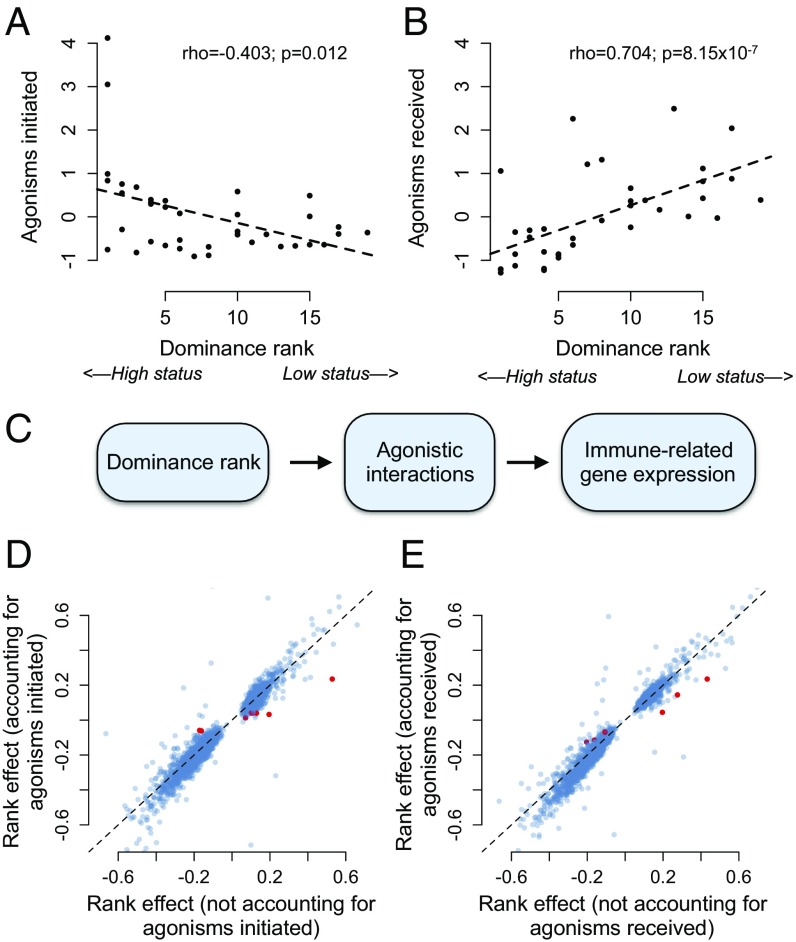Fig. 4.
Social status/gene expression associations in males are not explained by dominance rank-associated agonistic behavior. High-ranking animals in our dataset initiate more agonisms than low-ranking animals (A; Spearman’s rank correlation: rho = −0.403, P = 0.012), and low-ranking animals receive more agonisms (B; Spearman’s rank correlation: rho = 0.704, P = 8.15 × 10−7). The y axis represents a normalized measure of agonism rate corrected for observer effort. (C) We tested the hypothesis presented. However, we found that neither agonisms initiated (D) nor received (E) explain the relationship between male dominance rank and gene expression. Each point represents the estimate of the rank effect in the presence (x axis) or absence (y axis) of the putative mediating variable (correlation between rank effect estimates in the presence or absence of the mediator: rho = 0.953 and rho = 0.964 in D and E, respectively; both P < 10−10). Of the 2,277 rank-associated genes tested, only 0.26% and 0.39% (shown as red dots) were significantly mediated by received and initiated harassment, respectively. The dashed line shows the x = y line.

